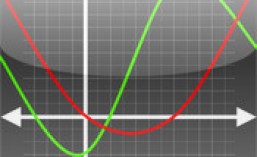“Paper Models of Polyhedra”
One of my favourite parts of mathematics is 3-Dimensional solids. 25 years ago, in my first few years of teaching and well before computers in the class, I had students make Platonic Solid mobiles to hang in the class. The many different sizes, colours and variations made it a really neat project. I spent years building all the Archimedean solids, prisms, anti-prisms, and various other polyhedra. They were great to take off the shelf, pass around, and then have students discuss formulae or approaches to calculating surface area and volume. And the names are fun to say too! “Great Stellated Rhombicosidodecahedron”
Question: why is visualization necessary (or not) for student understanding of math or science?
I have not included the study of polyhedra in my math classroom for years, as I have had a hard time reconciling this study to the time constraints of the curriculum. However; numerous studies have shown that spatial ability is positively related to achievement in mathematics (Battista et al., 1982). It is now becoming possible to model situations visually and geometrically with quite astonishing sophistication (Jones & Mooney, 2003). It is for the benefits to cognitive development that this study should be incorporated into the classroom. Without the ability to engage these visualizations “ the concepts …are often seen as abstractions” (Stieff and Wilensky, 2003, p.285). The ability for students to visualize, and in this case even hold a construct is a valuable one. It is more immediate and less theoretical to actually trace angles and vertices with your fingers, measure side length with a ruler and feel the weight and size of the object in your hands. Cognitive connections can be more strongly afforded by these 3-dimensional polyhedrons.
The website “Paper Models of Polyhedra” features a huge amount of 3-D solids in photographs and nets, and is a great resource for both Elementary and Secondary Math teachers.
Battista, M.T., Wheatley, G.H., & Talsma, G. (1982). The importance of spatial visualization and cognitive development for geometry learning in preservice elementary teachers. Journal for Research in Mathematics Education 13 (5) (Nov., 1982), pp. 332-340
Jones, K. and Mooney, C. (2003). Making space for geometry in primary mathematics. In: I. Thompson (Ed), Enhancing Primary Mathematics Teaching. London: Open University Press. pp 3-15.
Stieff, M., & Wilensky, U. (2003). Connected chemistry – Incorporating interactive simulations into the chemistry classroom. Journal of Science Education and Technology, 12(3), 285-302

